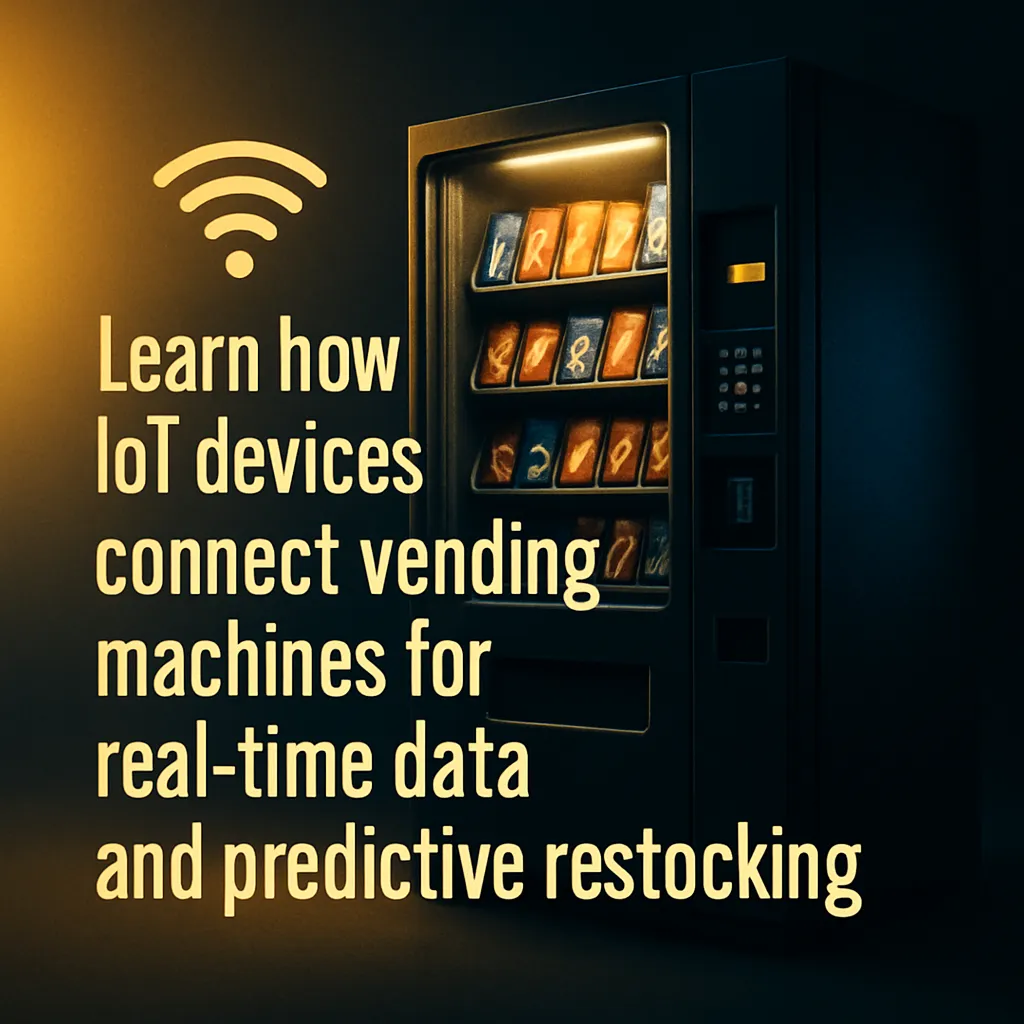IoT Integration in Vending Machines
Learn how IoT devices connect vending machines for real-time data and predictive restocking.
Back to Vending Technology ResourcesLearn how IoT devices connect vending machines for real-time data and predictive restocking.
Back to Vending Technology ResourcesInternet of Things (IoT) integration is revolutionizing the vending industry by connecting machines to the cloud, enabling unprecedented levels of efficiency, intelligence, and customer satisfaction.
![]() Real-time monitoring for inventory and machine status
Real-time monitoring for inventory and machine status
![]() Predictive maintenance and proactive restocking capabilities
Predictive maintenance and proactive restocking capabilities
![]() Enhanced customer experience with diverse payment options
Enhanced customer experience with diverse payment options

The Internet of Things (IoT) has fundamentally reshaped numerous industries, and vending is no exception. IoT integration in vending machines involves embedding sensors, software, and other technologies to connect them to the internet. This connectivity allows machines to collect and exchange data, providing operators with invaluable real-time insights into every aspect of their vending business.
From inventory management to customer behavior analysis, IoT empowers operators to move beyond traditional manual processes, ushering in an era of unprecedented efficiency, profitability, and customer satisfaction. Imagine vending machines that can proactively alert you when they need restocking, diagnose their own technical issues, or even adapt product offerings based on local demand and weather patterns.
One of the most significant advantages of IoT integration is the ability to optimize logistics. By knowing exactly what products are selling and when, businesses can implement predictive restocking models. This not only minimizes fuel consumption and labor costs associated with unnecessary trips but also ensures that machines are always well-stocked with popular items, preventing lost sales and improving customer experience. Efficient inventory management also helps to reduce spoilage for perishable items, especially relevant for those exploring micro market solutions that offer fresh food.
Furthermore, IoT enables enhanced operational monitoring. Operators can remotely track machine performance, identify potential malfunctions before they become critical failures, and even adjust pricing or promotions from a central dashboard. This level of control and visibility significantly reduces downtime and maintenance costs. The data collected can also provide granular details on sales trends, helping to inform product selection and placement strategies, leading to higher revenue per machine.
The benefits extend to the end-user by providing a more reliable and convenient experience. IoT-enabled machines often support a variety of cashless payment options, including mobile wallets and credit cards, catering to modern consumer preferences. This also aligns with the growing demand for touchless vending technology, enhancing hygiene and speed. By embracing IoT, businesses are not just installing vending machines; they are deploying intelligent retail points that are constantly learning and adapting.
IoT integration connects vending machines to the internet, allowing them to send and receive real-time data for enhanced monitoring and management.
It provides benefits like remote monitoring, predictive maintenance, optimized restocking, and detailed sales analytics, reducing operational costs and increasing efficiency.
They can collect data on inventory levels, sales patterns, machine errors, temperature, payment methods, and customer interactions.
Yes, IoT can enhance security through real-time alerts for tampering, remote diagnostics, and improved inventory tracking, reducing theft and downtime.
Absolutely. IoT integration is crucial for modern cashless payment systems, enabling mobile payments, credit/debit cards, and digital wallets.
By analyzing real-time sales data and inventory levels, IoT systems can predict when specific products will run low, enabling proactive and efficient restocking schedules.
Initial setup costs may exist, but the long-term benefits in terms of reduced operational expenses, increased sales, and improved efficiency often outweigh the investment.
Challenges include ensuring robust network connectivity, cybersecurity risks, managing vast amounts of data, and integrating with existing legacy systems.
Many existing vending machines can be retrofitted with IoT modules and sensors to enable smart capabilities, depending on their age and design.
Customers benefit from consistently stocked machines, fewer out-of-order incidents, and a wider range of convenient payment options, leading to greater satisfaction.